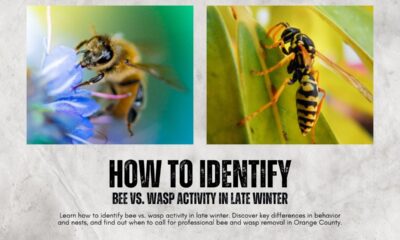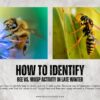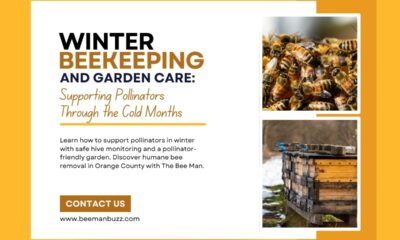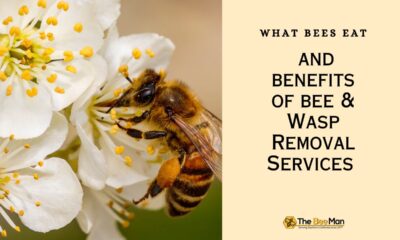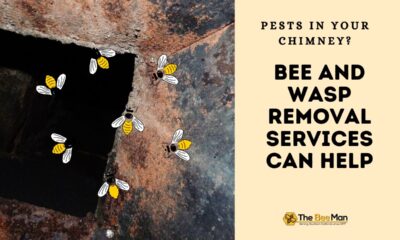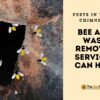Home Improvement
Yellow Jackets in Spring: What to Know About Their Early Nesting Behavior
As the weather begins to warm and spring settles into Orange County, it’s not just flowers that start emerging—yellow jackets do, too. Known for their aggressive behavior and painful stings, yellow jackets become active in early spring as new queens awaken from winter hibernation and begin scouting for places to start their nests.
Understanding yellow jacket behavior during this critical time can help you prevent encounters, protect your family and pets, and make informed decisions about pest control. Here’s what you need to know.
Early Spring: Nest Formation Begins
Unlike honeybees, yellow jacket colonies do not survive the winter. Only the fertilized queens make it through, hiding in protected spaces like logs, eaves, and wall voids. As temperatures rise, these queens begin searching for nesting spots to lay their first eggs and establish new colonies.
Common early nesting sites include:
- Underground burrows
- Wall voids and attics
- Eaves and roof overhangs
- Sheds and outdoor furniture
These nests start small but can grow rapidly, housing thousands of yellow jackets by late summer.
Recognizing Yellow Jackets
Yellow jackets are often mistaken for bees, but they have distinct differences:
- Sleek, hairless bodies
- Bright yellow and black coloration
- Faster, more aggressive movements
- Ability to sting multiple times
They tend to hover around trash, sugary drinks, protein sources, and gardens. In early spring, they may appear solitary as queens scout nesting areas.
Read related blog here: https://www.ochelper.com/bees-and-wasps-you-need-to-remove-from-your-home/
How to Avoid Stings and Nesting Near Your Home
Preventing yellow jacket nests early in the season is key to avoiding dangerous stings later. Here are a few tips:
- Inspect Your Property Regularly
- Look under decks, eaves, and in garden sheds for early nest construction.
- Seal Entry Points
- Patch up cracks in siding, fill wall gaps, and cover vents with mesh.
- Hang Decoy Nests
- Yellow jackets are territorial and will avoid areas where they think a nest already exists. A paper bag stuffed to mimic a nest and hung outside may help deter them.
- Cover Food and Trash
- Keep lids tight on garbage bins and avoid leaving sugary or protein-rich foods outside.
- Limit Ground Cover and Debris
- Yellow jackets often nest underground. Clearing fallen leaves and keeping grass trimmed can make your yard less appealing.
When to Call the Pros
If you discover an active yellow jacket nest or notice increased activity near your home, do not attempt removal yourself. Yellow jackets defend their nests aggressively and can sting multiple times. Instead, contact professional bee and wasp exterminators for safe removal.
Trusted bee removal in Orange County and bee removal in Irvine providers, like those who specialize in environmentally responsible methods, can assess the situation and recommend the best approach—whether it’s removal, extermination, or preventative treatment.
Conclusion
Spring is the start of yellow jacket season, and staying informed can help you stay safe. By recognizing early nesting behavior and taking preventive steps, you can enjoy the outdoors without unwelcome stinging guests.
If yellow jackets have already made a home on your property, reach out to professional bee and wasp exterminators offering bee removal in Orange County or bee removal in Irvine. Early action makes all the difference in avoiding a summer full of stings.


